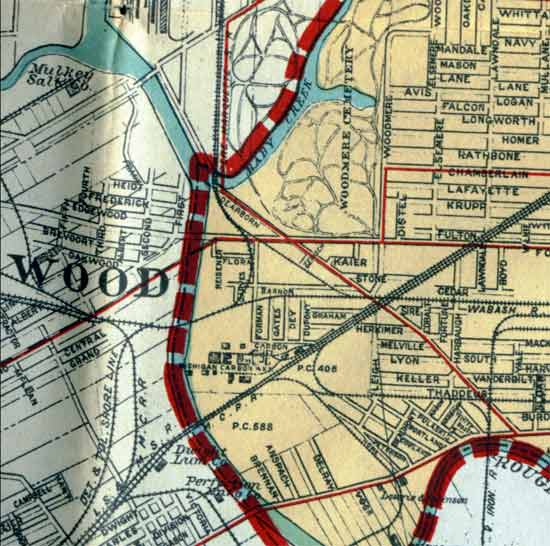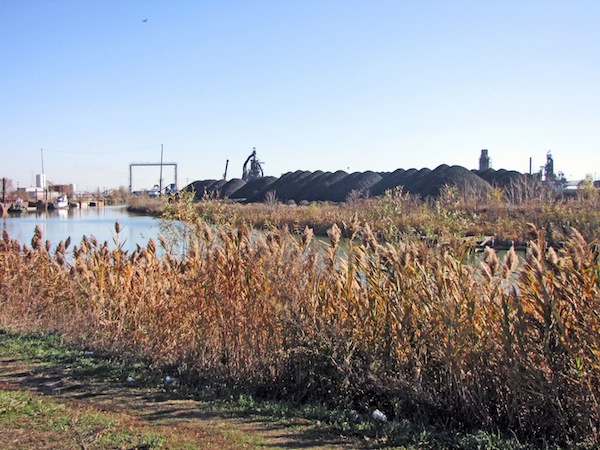
Ghost or live?
By Shaun Nethercott, Matrix Theatre Company
In a few short hours, I am going to be leading a sort of eco-justice tour of Detroit with my friend Rich Feldman. We will be leading teachers and others to some of Detroit’s amazing places on both the horrific and the wonderful side. We will see abandoned factories bigger than some towns in the West. We will see wonderful productive farms in the middle of the city. We will see places where the earth is reviving and places where it is screaming.
When we first moved to Detroit, we were very unnerved. It was so foreign in ways we couldn’t understand. We couldn’t understand what we were seeing; we couldn’t identify any of the plant life; we couldn’t make heads or tales of where we were. In every other place we have lived, the landscape provided the internal map that told us where we were. In Detroit, there were grid streets and spoke streets, curving streets, and freeways, none of which seemed to relate to any specific features of the landscape.
When we traveled outside the city, which we did and do often, we were struck by the complexity of the landscape in Michigan. There are lots of hillocks and potholes, creeks, streams, ponds, lakes, swamps, marshes, big lakes and, of course, great lakes. None of that complexity seemed present in the city. It itched at me like a mosquito bite. Where did the water go? How could all of Michigan all around the city have such a multiplicity of water features and the city have almost none?
That led me to maps first, then historical maps, then 19th century histories, then to various archives where I found out that the land in Detroit was just as watery and complex as anywhere in Michigan. There were seven streams in the city which have been largely buried, including one navigable river. There were multiple wetlands and a few good sized lakes.
Because Detroit grew in spurts, first around the opening of the Erie Canal and second around the auto boom of the 1910’s and 20’s, its landscape was put to the service of the land speculators without much thought or planning. That is why to do this day, houses and businesses must run sump pumps day and night. They are sitting smack in the middle of a wetland. Detroit regularly gets 30 inches of rain each year. The water will go where the water will go, house or no house. Why is anyone surprised when Brownstown floods? It sat underwater for millenia. Pushing dirt around doesn’t change any that.
So now I am going to lead people around the city and if I do my job right, give them eyes to see where they are. When they see phragmites, they should know that there is water within 6 inches of the surface. When they see certain kinds of poplars, they should know they are near a stream side. I want to show them where Baby Creek, and May Creek, Parrents Creeks and Connor Creek are proving that water always wins. Try to cage them, or cover them or turn them to sewers, they have a way of resurfacing anyway. I will show them the fifteen manhole covers which mark the confluence of the Savoyard River and the Detroit River. I want them to see the hill in downtown that shows the course of the river. I want to help people see the place within in the place.
I am glad to do, but I also grieve. There are places where the earth is screaming with the abuse perpetrated on it. At the confluence of Baby Creek, the Rouge River, and the Detroit River lies the man made horror of Zug Island. In another time, it was a rich wetland carved by an oxbow of the Rouge River. It was not an island at all. Now it is a toxic wasteland, reeking and repugnant. It is not alone. There are so many places where the land has been subject to rape, then abandoned to try and heal itself as best it can. There are places where it is still being actively abused, as near the steel plants downriver.
It is wearing on the soul to hear the cries of the land. It is enervating to make my eyes turn away from what was and should be (and can be) one of the planet’s most fertile environments. I do what I can change to help people to see what could and should be, but I have been pumping my aquifer much too long.
I need to hear the earth simply sing. I need that healing and wholesome voice to remind me of the connection of all things. I need to hear the voice alive. The shriveled ghost of a voice of Detroit’s earth and water I both honor and share, but I need the roar of the earth alive to keep the transmission going. Let the song begin.
Recent Content
-
Artsarticle ·
-
Artsarticle ·
-
Artsarticle ·


